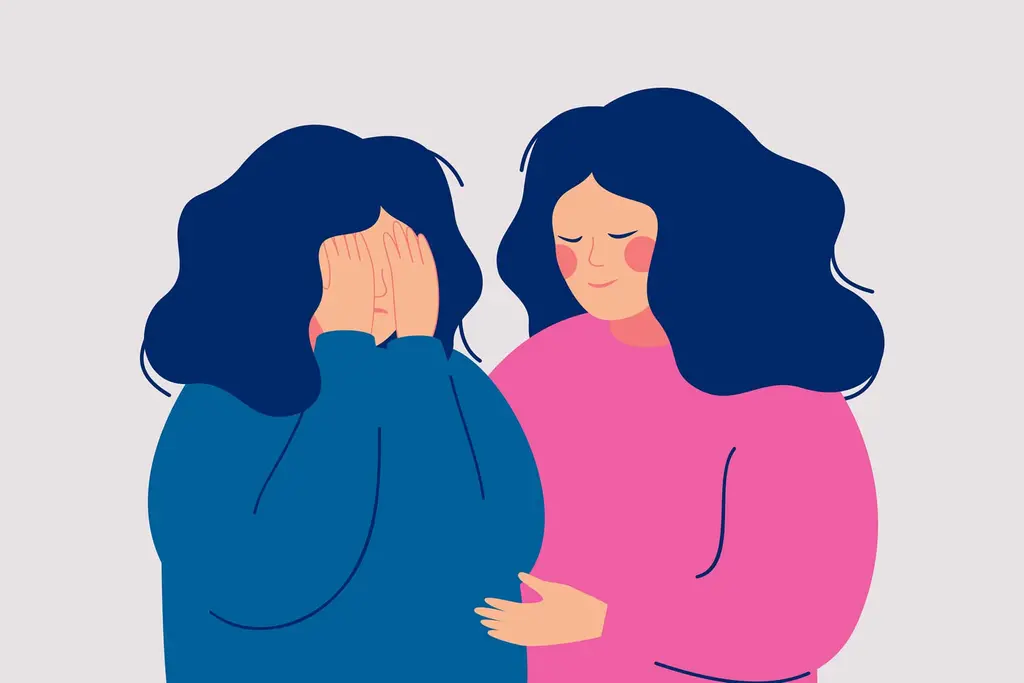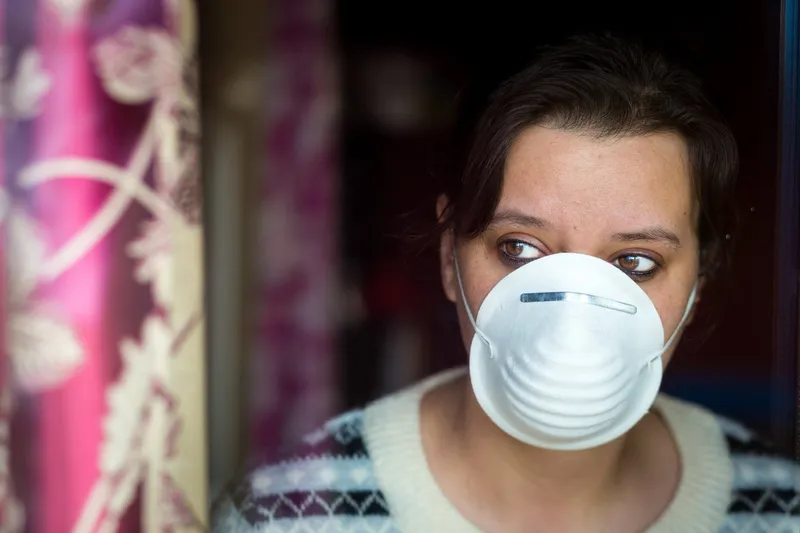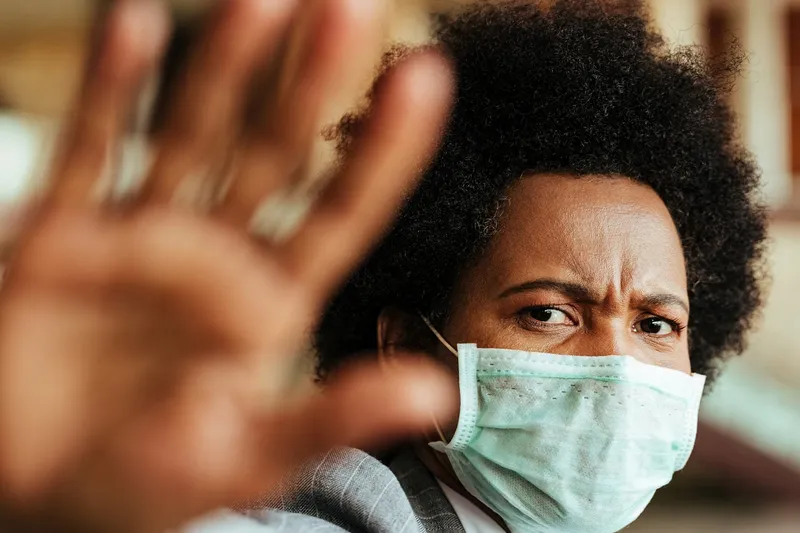
A panic attack is a terrifying thing, as I know from personal experience. I’ve had many in my lifetime, including once in my therapy office, ironically enough—the very space where I treated many people for panic disorder. I suddenly felt really strange, and was sure something terrible was about to happen, probably a stroke. I walked outside and called my brother, because I didn’t want to be alone when disaster struck.
What if you find yourself on the end other of that line, or with someone in person when they’re having a panic attack? What’s the best way to respond? How can you be helpful? There are no hard-and-fast rules, but keep in mind these general principles.
1. Familiarize yourself with the symptoms.
It’s good to know what panic attacks are like; if you’re not surprised by some of the symptoms, you’ll have an easier time being present. It’s hard to convey the terror of a panic attack unless you’ve had one yourself.
The overarching feeling is typically of imminent doom—that something awful is going to happen, like dying, going crazy, or somehow losing control. Other common symptoms include a racing or pounding heart, rapid breathing, nausea, lightheadedness, sweating, and a feeling of being disconnected from reality or from one’s body.
2. Don’t assume it’s a panic attack unless there’s good reason to.
While panic attacks are often mistaken for things like a heart attack or stroke, the opposite can also happen. One of my family members was actually sent home from the emergency room with a diagnosis of panic attack and a prescription for Xanax, only to discover he had had a heart attack. I always encourage my therapy patients who describe panic attacks to have a full medical workup to rule out a direct physiological cause, like heart disease. (Most have already been through many rounds of medical tests.) When in doubt, err on the side of caution.
3. Be aware of your own distress.
It’s not an easy thing to be with someone who is in such a high state of distress. Notice the thoughts and feelings that come up for you, such as fear or helplessness. Knowing what you’re experiencing can make it easier to focus on the other person.
4. Remember that panic itself is not dangerous.
People often believe they’re having a medical crisis during a panic attack, but panic per se is generally not dangerous. (People sometimes do things in response to panic that create a dangerous situation, like a last-minute merge in heavy traffic to avoid going over a bridge.) If you know the person is not in imminent physical danger from the panic, it will be easier to communicate that message to them.
5. Remember that it will end on its own.
Thankfully our nervous system is self-correcting, so what goes up will come down. That’s because our “rest-and-digest” system balances out the fight-or-flight system. Panic generally starts to subside within ten minutes, and often sooner (although high states of anxiety that don’t rise to the level of full-blown panic can last for longer). It can help you stay calm to know that panic is self-limiting, and will resolve on its own.
6. Speak calmly and confidently.
When the false alarm of panic goes off, it’s very helpful for you to act unalarmed. Make it clear to the other person that you’re not panicking about their panic. Your tone of voice may be as important as the words you use. A soothing voice conveys confidence and activates the parasympathetic nervous system, which quiets the alarm bells of the fight-or-flight response.
7. Tell the person what it is.
If you’re confident it’s a panic attack, let the person know. You might say things like, “It’s okay, you’re having a panic attack. This is anxiety. I know it feels awful. You’re going to be okay. I’m here and I’m going to stay with you. You’ll get through this.” Avoid arguing if they say it’s something more dire. Try instead to roll with their responses. Your calm presence will likely say more than attempts to convince them it’s just panic.
8. Don’t try to make panic stop.
It’s understandable that you would want the panic to stop ASAP. But take care not to convey a sense of urgency—that the person has to stop panicking, right now. That message will probably just make them more upset, and won’t be helpful to your relationship, either. Paradoxically the more we resist panic, the more it often intensifies.
9. Don’t tell the person to calm down.
On a related note, you might have the impulse to tell the person to “calm down” or “just relax,” especially if you’re upset by their acute distress. But no one wants to calm down more than the panicking person does. It’s all they want in that moment. And insisting that they stop panicking will likely just make things worse. Instead, communicate your steady presence and support.
10. Forget the paper bag.
You may have heard the suggestion to have a person breathe into a paper bag when panicking. This technique was once recommended as an effective way to stop the hyperventilation that can trigger panic, by increasing too-low levels of carbon dioxide in the blood. But it’s often not very effective, and can even make things worse—especially if the person is actually having an asthma attack, or a heart attack. It can also create the belief that “I can only survive a panic attack if I have a paper bag.”
11. Encourage the person to find grounding.
If you do want to offer the person a technique, you might encourage them to connect with a sense of grounding. Panic generally feels quite groundless, like the world is shifting under our feet. So you could suggest that they feel the floor under their feet, or their body pressing down into their chair. Greater awareness of one’s physical senses in this way can also bring thoughts back from the disaster scenarios that are common during panic.
12. Invite the person to move with you.
Some people find it helpful to get moving when they’re panicking, even if their initial instinct is to freeze or curl up in a ball. Invite them to stand up with you, walk around, and shake out their arms and legs. If they refuse, it’s probably better not to insist.
13. Only touch them if they want you to.
Some may find human touch comforting during panic. Others find it confining or constricting. Follow their lead to determine what’s right for them—from an embrace, to a hand on the shoulder, to keeping a respectful distance.
If you’re often with a friend or family member who’s prone to panic, talk openly with them about what they find helpful when they’re panicking. Don’t be surprised if they can’t think of anything, because they may not know what can help other than time and riding it out. Be sure to ask what they don’t want you to do because it’s unhelpful or makes things worse.
I didn’t reach my brother that day when I panicked in my office, but just hearing his outgoing voice message was comforting. When we’re beside ourselves with anxiety, we want a loved one beside us. Simply staying with the person through their panic attack sends a strong message of support, and may be the best help you can offer.
If you’d like to help your friend or family member find a therapist, cognitive behavioral therapy has the strongest research support in treating panic disorder. You can search for a CBT therapist near you through this online directory: Association for Behavioral and Cognitive Therapies Find a CBT Therapist.
If you or a loved one would like easy daily practices to help manage the anxiety and stress that can lead to panic, my e-guide “10 Ways to Manage Stress and Anxiety Every Day,” is available for free when you sign up for my newsletter.
Important:The opinions expressed in WebMD Blogs are solely those of the User, who may or may not have medical or scientific training. These opinions do not represent the opinions of WebMD. Blogs are not reviewed by a WebMD physician or any member of the WebMD editorial staff for accuracy, balance, objectivity, or any other reason except for compliance with our Terms and Conditions. Some of these opinions may contain information about treatments or uses of drug products that have not been approved by the U.S. Food and Drug Administration. WebMD does not endorse any specific product, service or treatment.
Do not consider WebMD Blogs as medical advice. Never delay or disregard seeking professional medical advice from your doctor or other qualified healthcare provider because of something you have read on WebMD. You should always speak with your doctor before you start, stop, or change any prescribed part of your care plan or treatment. WebMD understands that reading individual, real-life experiences can be a helpful resource, but it is never a substitute for professional medical advice, diagnosis, or treatment from a qualified health care provider. If you think you may have a medical emergency, call your doctor or dial 911 immediately.








